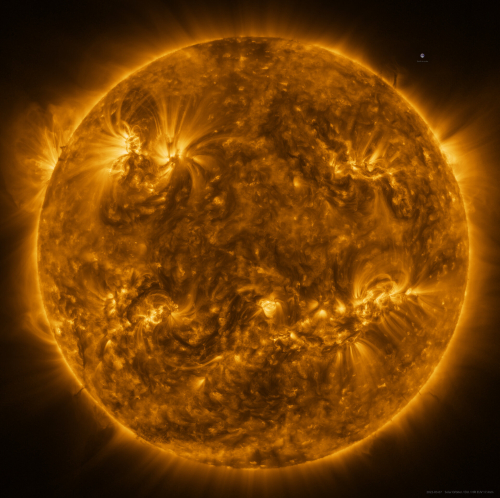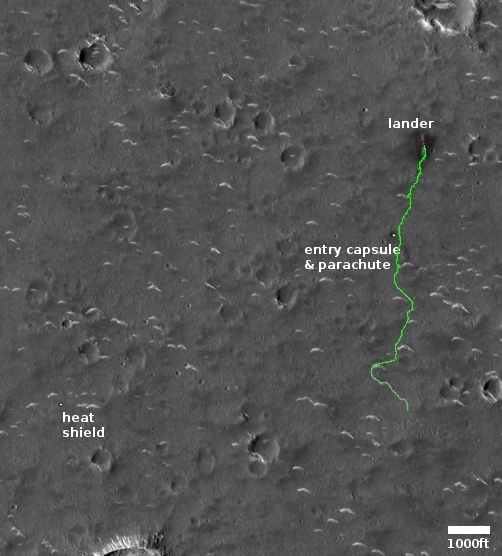NASA/ESA revise plan to recover Perseverance core samples from Mars
NASA and ESA yesterday announced that the agencies have revised their plan to recover Perseverance core samples from Mars, dropping the launch of a rover to pick up the samples.
Instead, they have decided to use Perseverance to bring the samples to the return vehicle, which will also carry two small helicopters.
In 2030, if all goes as planned, the NASA lander will touch down near where Perseverance is working. The rover will drive over to the lander, and an ESA-built robot arm will extract the tubes one by one and place them inside a spherical container the size of a basketball. In early 2031, a rocket on the lander will loft the container into Mars orbit, where a return craft built by ESA will snare it, enclose it in several layers of shielding for safety, and then head for home. In 2033, a saucer-shaped descent pod will carry the samples down to the Utah desert.
If Perseverance gets into difficulties during its 9-year wait for company, controllers can instruct it to drop its cargo of sample tubes onto the ground, creating a second depot. If that happens, the helicopters come into play: they can fly up to 700 meters, land next to a sample tube—each weighs up to 150 grams—and, with wheels on the bottom their feet, roll over the tube and pick it up with a grabber. On returning to the lander, they will drop the tubes on the ground for the arm to pick up.
The change means that the rover the United Kingdom was planning to build will either be abandoned, or repurposed as a lunar rover.
NASA and ESA yesterday announced that the agencies have revised their plan to recover Perseverance core samples from Mars, dropping the launch of a rover to pick up the samples.
Instead, they have decided to use Perseverance to bring the samples to the return vehicle, which will also carry two small helicopters.
In 2030, if all goes as planned, the NASA lander will touch down near where Perseverance is working. The rover will drive over to the lander, and an ESA-built robot arm will extract the tubes one by one and place them inside a spherical container the size of a basketball. In early 2031, a rocket on the lander will loft the container into Mars orbit, where a return craft built by ESA will snare it, enclose it in several layers of shielding for safety, and then head for home. In 2033, a saucer-shaped descent pod will carry the samples down to the Utah desert.
If Perseverance gets into difficulties during its 9-year wait for company, controllers can instruct it to drop its cargo of sample tubes onto the ground, creating a second depot. If that happens, the helicopters come into play: they can fly up to 700 meters, land next to a sample tube—each weighs up to 150 grams—and, with wheels on the bottom their feet, roll over the tube and pick it up with a grabber. On returning to the lander, they will drop the tubes on the ground for the arm to pick up.
The change means that the rover the United Kingdom was planning to build will either be abandoned, or repurposed as a lunar rover.




